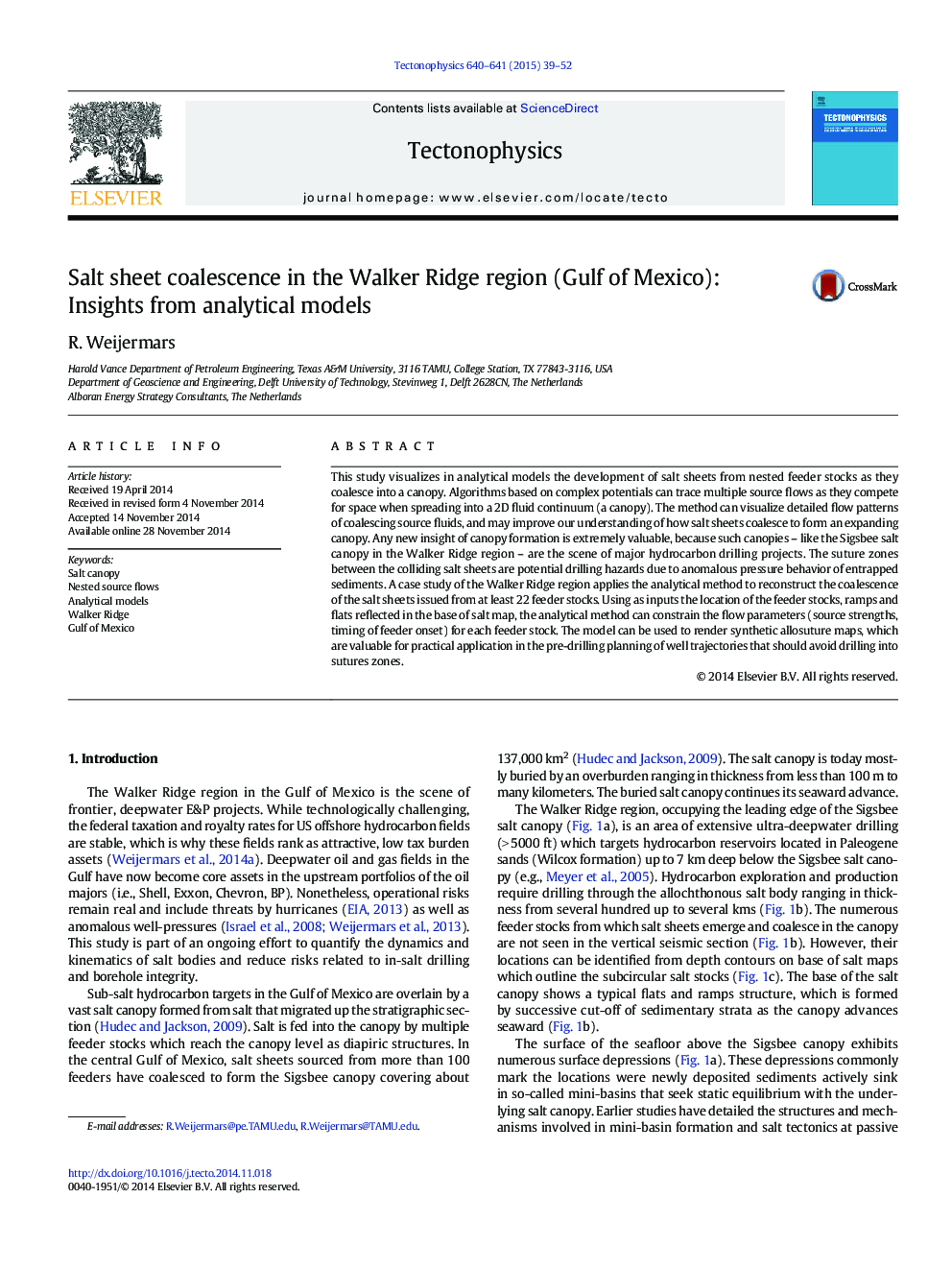| کد مقاله | کد نشریه | سال انتشار | مقاله انگلیسی | نسخه تمام متن |
|---|---|---|---|---|
| 4691705 | 1636751 | 2015 | 14 صفحه PDF | دانلود رایگان |
• Salt canopy growth mods reveal hidden suture zones.
• Analytical method constrains flow parameters for each salt feeder stock.
• Leading edge of Sigsbee salt canopy advances without far-field slope flow.
• Synthetic suture map may contribute to reduce drilling risk.
• Walker Ridge case study provides practical example.
This study visualizes in analytical models the development of salt sheets from nested feeder stocks as they coalesce into a canopy. Algorithms based on complex potentials can trace multiple source flows as they compete for space when spreading into a 2D fluid continuum (a canopy). The method can visualize detailed flow patterns of coalescing source fluids, and may improve our understanding of how salt sheets coalesce to form an expanding canopy. Any new insight of canopy formation is extremely valuable, because such canopies – like the Sigsbee salt canopy in the Walker Ridge region – are the scene of major hydrocarbon drilling projects. The suture zones between the colliding salt sheets are potential drilling hazards due to anomalous pressure behavior of entrapped sediments. A case study of the Walker Ridge region applies the analytical method to reconstruct the coalescence of the salt sheets issued from at least 22 feeder stocks. Using as inputs the location of the feeder stocks, ramps and flats reflected in the base of salt map, the analytical method can constrain the flow parameters (source strengths, timing of feeder onset) for each feeder stock. The model can be used to render synthetic allosuture maps, which are valuable for practical application in the pre-drilling planning of well trajectories that should avoid drilling into sutures zones.
Journal: Tectonophysics - Volumes 640–641, 20 January 2015, Pages 39–52
